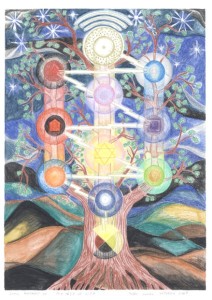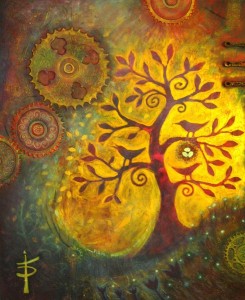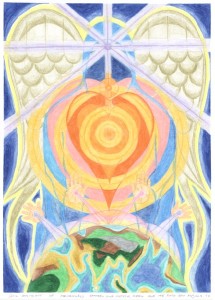Well, its Christmas time, which is essentially the celebration of the birth of Jesus, so I thought it might be a nice time to reflect on his teachings in this post. Cynthia Bourgeault in her book The Meaning of Mary Magdeline: Discovering the Woman at the Heart of Christianity (recommended reading) outlines three of the central mystical teachings of Jesus. When I say mystical teachings I mean instructions that are meant to be practiced in order to bring about inner transformation:
1) Gnosis– The letting go of, or detaching from the egoic self and its self-centred concerns
2) Abundance – Letting go of the concerns of the egoic self enables us to access the unlimited resources of the Kingdom of Heaven (found within our own hearts), thus tapping into a source of unlimited of universal abundance
3) Relational Love– This is basically the special ability of learning to love in relationships (to lovers, family, friends, pets etc…) to teach us how to spot and let go of our egoic self (thus teaching us Gnosis), and thereby access a direct personal experience of the abundance of the Kingdom of Heaven, which is something that we find within ourselves. There is something about the nitty gritty of learning to love in relationships that opens our hearts in a real and tangible way that cannot be achieved by loving God in an abstract or meditative way.
Three types of relational love
Christmas, lots of opportunities to meet with family and friends and practice relational love. Here are three main types of relational love, they all really interpenetrate each other in an organic way:
- Eros, or erotic love– The creative and passionate love most commonly associated as being between lovers, but can also exist in other situations. For example if we have someone with whom we share a common cause, our creative efforts to further that cause could be considered a type of non-sexual Eros in relationship.
- Agape– The love that empathizes with others, feels keenly their suffering and practices compassionate understanding and care. The classic image of this would be the mother caring for her child, but it infuses any situation where we open our hearts to others with compassion.
- Philia– So called brotherly or sisterly love, found between literal brothers and sisters, spiritual brother and sisters, between good friends.
Christmas can be a time to consolidate and rejoice in all of these wonderful expressions of relational love.
Winter Solstice Meditation recording
Christmas was superimposed on an older pagan festival, the Winter Solstice, which is celebrated on the 21st/22nd December. Last Tuesday We did a Winter Solstice meditation which you can listen to here:
[audio:https://tobyouvry.com/wp-content/uploads/2010/12/Winter-Solstice-medi-Dec-21-2010.mp3|titles=Winter Solstice medi Dec 21 2010]Or download the entire meditation and talk here:
Winter Solstice talk and medi Dec 21 2010
All proceeds from the class went to the Riverkids Project , a charity dedicated to stopping child trafficing in Vietnam. If you feel guided to, you could spread the love a little more this christmas by visiting their website and making a donation 😉
Thanks for reading, and have a great Christmas!
Yours in the spirit of relational love,
Toby
Overview of upcoming events, classes and workshops with Toby in January


